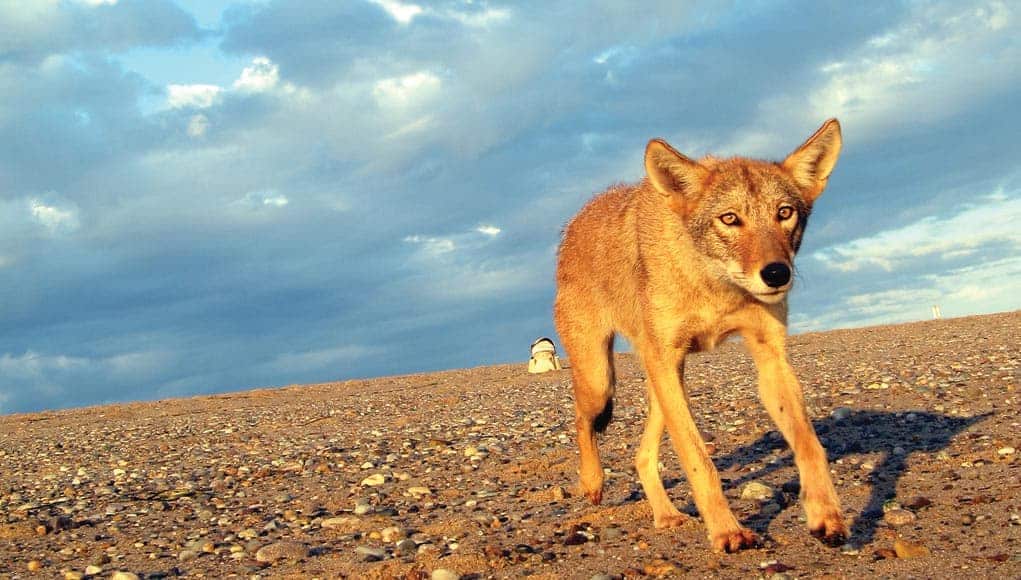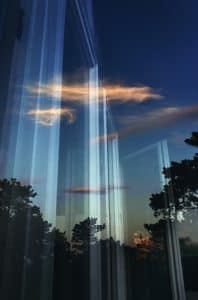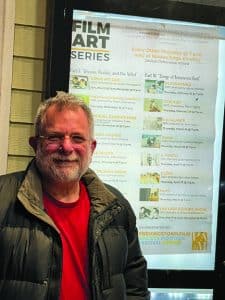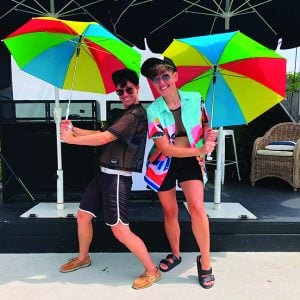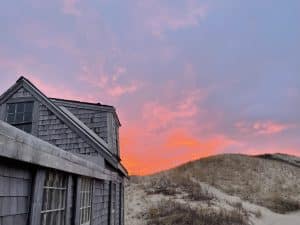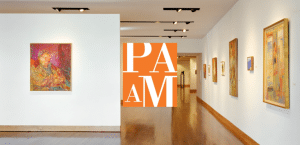by Rebecca M. Alvin
Top Image: Photo: Lisa-Marie Nowakowski
There is perhaps no more fitting animal to roam the dunes of Provincetown than the coyote. Important to indigenous North American cultures for centuries, the coyote is associated with magic, humor, complexity, and creativity. On the flip side, it is also a symbol of recklessness, indulgence, and trickery. Although the animals we see here are not native to the area and not pure coyotes, these eastern coyotes (also called coywolves) have 60 to 65 percent coyote DNA (the remaining amount is mostly eastern wolf, but also domestic dog), and have been an essential part of the ecosystem on Cape Cod for about 30 years now.
To see a solitary coywolf roaming through the beach grass at Herring Cove or even in a backyard is common enough that most of us have at least some experience with them. And it is always a bit of a thrill, fueled by an instinctive combination of fear and fascination. In the vast majority of sightings, humans and coyotes keep a healthy distance from one another, each creature acknowledging the other with tentative curiosity, but only for a fleeting moment. There’s a kind of magic to it, seeing the wildness that still exists out here.
When Provincetown artist Lisa-Marie Nowakowski found herself naked and face-to-face with a coyote this past July, she shared a particularly intriguing encounter in a Facebook post. The post begins: “A couple of evenings ago, my photo shoot was interrupted by a very bold coyote. I was completely naked, kneeling at the water’s edge with prayer beads in my hands when the creature approached me. Initially I felt a bit nervous, but somehow it made sense that I would have attracted this wild animal, as I was occupying a kind of wilderness within myself as I pursued my photo project in the nude in the great outdoors. I rose to my feet and offered a gentle, reverent, ‘Hello’— expecting the creature to amble along. When s/he instead trotted closer and lingered, I firmly but kindly told him/her to run along, as I was making a picture and must concentrate. It took a few steps away, but then circled back— it did this several times, despite the rising insistence in my voice, which was soon accompanied by dramatic, banishing hand gestures.”
Looking back on it now, Nowakowski is still clearly affected by it. “There’s something about being that close to a wild animal and looking in its eyes that, like the next day I felt like something was shifted,” she shares. “It created some movement in me somehow.”
At first it was a beautiful connection, but then the animal left and circled back, making her feel unsettled. When a man walking on the beach saw the situation unfolding, she asked for help. And when the coyote actually picked up her bag and tried to run off with it, the man threw a rock near it (not at it, Nowakowski emphasizes), causing it to finally go away. But the experience has stayed with her, taking on a larger meaning, as encounters with wildlife often do.
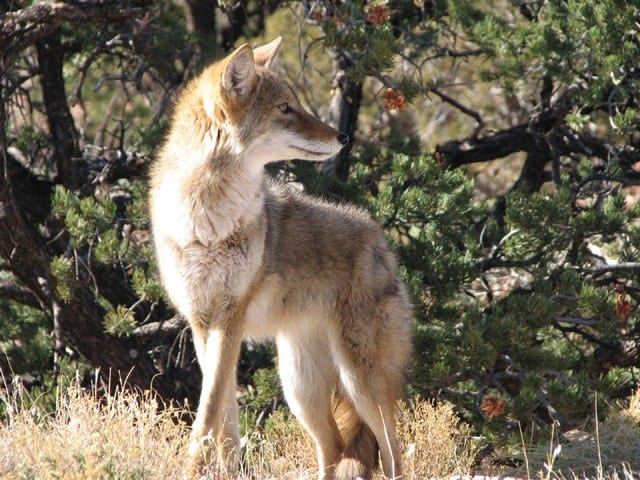
“The next day was the day to feel all the feelings. And I really got upset that an animal encounter came to rock throwing. It kind of broke my heart,” she says, still visibly shaken by it. “I love animals and I don’t want any of them to get hurt, and I don’t want them to hurt us, but in reflecting on it more, I feel like I was tuning into the great imbalance of our world. Like we’re all in a state of imbalance with the pandemic and with the racial situation, and we’re feeling that all to a degree, but I felt like this sort of intensified it in a way or put a specific lens, a reflective lens on all of that, and it was just like these coyotes are coming from the wild and approaching people like they haven’t before. And then humans are throwing rocks at them, and it was just a really vivid illustration of how out of balance our world was.”
Wildlife biologist Dr. Jonathan Way has spent decades studying these coywolves. A native of Cape Cod, he says he became interested when he realized not a lot of studies had been done on predators in urbanized areas, and none had been done on coyotes in Massachusetts. This became the focus of his doctoral research at Boston College and he has since written extensively, authoring several books for the general public, including Suburban Howls, published in 2007.
Looking at Nowakowski’s description of what happened, noting that the coyote did not attempt to attack her in any way (in fact, as Nowakowski puts it, the animal was “equal parts bold and skittish… Like it kept coming back and it kept coming very close, but I so much as moved my hand and it would startle”), Way says he’s certain this is an example of a “habituated coyote,” that is one that has become too comfortable around humans, likely because misguided animal lovers have been feeding them, something that is not only detrimental to all species involved, but which violates the unspoken boundaries of the wild and human civilization.
While there was an overwhelming amount of media attention paid to a not-so-pleasant coyote encounter this past May when a rogue coyote killed an off-leash puppy at Herring Cove, there are far more experiences each day that aren’t sensational enough to be discussed widely. In fact, eastern coyotes are not something to be terribly worried about. As Mark Faherty, science coordinator at Mass Audubon’s Wellfleet Bay Wildlife Sanctuary explains, “They’re not dangerous animals. I mean we’re not in grizzly country out here… If they’re getting too close to you it’s because, for a variety of reasons, they probably have become too comfortable around people. But they should run away if you throw something, wave your arms, that kind of thing. I had an experience where a coyote was sort of walking up to me and following me around on North Beach Island in Chatham, and it’s because tourists were feeding him.” He adds that multiple coyotes over there ultimately had to be killed because they were deemed too aggressive.
“There’s been like ten coyote attacks in all of Massachusetts history,” Way concurs, adding nationwide there are three to four attacks by coyotes of both the western and eastern varieties combined per year in all of North America. “There are five million dog bites per year on people in the U.S. and about two dozen people are killed by dogs, whereas two people in all of recorded history in North America have ever been killed by a coyote.”
At the same time there are precautions that we must come to terms with if we want to avoid tragic interactions in which people or pets are harmed and coyotes tracked down and shot, as the one who killed the puppy (and possibly bit a woman in a separate incident) in May was.
“It’s impractical for coyotes living on Cape Cod to always run away from people—even though they almost always do—because they have so many houses within their terrotory, they have so many people, and they have so many dogs within their territory. They live in large areas with low density, so there are much less coyotes than people think there are,” Way explains. That being said, he adds “leashing dogs is absolutely critical.”
Interactions between the canine species often leads to territorial battles that can end in tragedy for all the animals concerned. Artist Sian Robertson, who lives in North Truro, knows firsthand about the value of having her dogs on a leash when walking in the woods. Although she says she’s actually seen coyotes more often in her own yard than in the woods, she recalls a day this past spring when a coyote came out in the trail in front of her and her dogs, causing them to go “absolutely crazy.” Meanwhile, the coyote simply observed as if wondering what the noise was all about. It was when a second coyote appeared that Robertson became understandably nervous. Again, neither coyote made any move to attack, nor were they particularly aggressive, but if the dogs had been unleashed, it may have been a different story. In fact, Way’s own dog recently got into a tussle with a coyote and still walks with a limp several months later.
Way says there is a need for studies of eastern coyotes hunt in order to better understand their distinct behaviors. Although he acquired the necessary permits for such a study in 2015, he was unable to do it because hunting of coyotes is allowed in designated areas of the National Seashore, with no bag limits and few restrictions on hunting methods, making it difficult to track animals and observe their natural behaviors.

“Most of the data on wolves that’s been collected in the last 20 years, since wolves were brought back to Yellowstone National Park, [has come from that park], and I and many, many other people feel like we could have that in the Northeast in places like the Cape Cod National Seashore [if] the animals are protected. And if we funded the study, we could really learn a lot about their ecology and how they behave in natural circumstances,” Way suggests, adding that coyotes are actually safer in more urban areas like Hyannis because hunting is obviously not allowed there. He’s radio-collared and tracked coyotes living at the airport there and other parts of that less-than-natural setting.
In 2017 a petition was circulated asking the Seashore to place a ban on carnivore hunting and also to hire Way as a wildlife biologist specializing in mammals and carnivores in particular, but to no avail, despite over 8,000 signatures.
“The founding legislation of the park allows for hunting,” explains National Seashore Chief of Natural Resource Management and Science Geoff Sanders, who was not with the Seashore at the time of the petition. “It recognizes that it was an activity that existed in there before the park was formed. And one of the founding principles of the park is trying to maintain a lot of the same cultural and recreational history that took place on Cape Cod before the park was formed.”
Way has studied them in the past and is able to confidently discuss a number of important aspects of coyote behavior. For example, their range is somewhere around six to ten square miles; and although they don’t always hunt in packs, they do live in family groups with three to five adult coyotes that usually include a mated pair and their grown offspring. And that beautiful, eerie chorus of howls we sometimes hear on cold winter nights echoing throughout the dunes? No, this is not a pack of coyotes celebrating a kill. “The most common reason to howl is to advertise and guard their territory from other coyote packs. So, you might hear three to five animals howl in the winter time and it might sound like 15 different ones,” Way explains. “Sometimes they do it to communicate within the pack, to kind of find each other, if they’ve strayed away from each other.”
Observing these animals with respect for the unspoken boundaries between wilderness and human-dominated civilization is one of many environmental wonders that are essential components of Provincetown’s appeal, beyond the nightlife, art scene, and abundantly tolerant atmosphere of downtown. Dunes, lighthouses, the ocean, Beech Forest, whales, and our wildlife are unique elements of the Outer Cape whose significance cannot be overstated. Coywolves are part of the culture out here and they play an important role in it that we benefit from recognizing. Way sees future possibilities for expanding on that.
“[Predators] are ecologically important. They’re aesthetically important to people. They’re importat to the ecosystem as well,” Way emphasizes. “It’s also really important to realize they have a lot of benefits. People spend millions of dollars per year to go to Yellowstone to watch wolves, and I think that they could spend millions more if people were advertised to to come to Cape Cod National Seashore to watch wild, unhunted eastern coyotes. I think that could be a tourist hotspot in the off-season… I think that nature-based toursim could be more fully utilized than it is, and I’m not the only one in that boat.”
For more information and access to a wealth of Jonathan Way’s research on eastern coyotes visit easterncoyoteresearch.com. To learn more about the Cape Cod National Seashore, including information about living with coyotes visit nps.gov/caco. For information on Mass Audubon’s Wellfleet Bay Wildlife Sanctuary visit massaudubon.org.
For more of Lisa-Marie Nowakowski’s work – Visit StudioLMN.com

